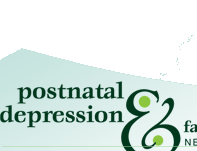 |

Medications In Pregnancy
This section is written for medical professionals.
Consider the following
1. Risks must always be weighed against benefits. This is particularly difficult in pregnancy because there are many gaps in our knowledge on both sides of this equation. For most medications there are insufficient and/or inadequate studies, with insufficient numbers, to know exactly what the risks of exposure during pregnancy are. Although these limitations will affect the precision and certainty of our clinical opinion, we do have some important information to share with our patients, so that they can make the best possible decision about the use of medication.
2. The possible risks of medication include:
- structural teratogenesis,
- physiological and behavioural teratogenesis,
- direct effects on the foetus and neonate.
While we have very little information about the long term effects on neurophysiology and behaviour, we have more information about structural teratogenesis and more again about the direct physiological effects of medication on the neonate.
3. The risks of untreated bipolar and depressive disorders in pregnancy and the postpartum are significant and include:
- increased rates of prematurity,
- increased rates of birth complications,
- increased rates of low birth weight infants and
- detrimental developmental effects on the infant,
- risks for the mother herself from her illness
4. There is also evidence that ‘stress’ in the mother during pregnancy affects the development of neuro-chemical and hormonal systems in the brain of the foetus. These are thought to play a crucial role in the development of psychiatric illnesses later in life. An example of this is that elevated maternal cortisol levels result in elevated foetal cortisol levels which affects fetal brain development (Glover et al, 1997).
5. Most organ development occurs in the foetus in the first three months (first trimester), of pregnancy.
- Exposure up to 32 days after conception may affect neural tube development and closure.
- Exposure between days 21 and 56 after conception may affect heart formation.
- Exposure during days 42 to 63 may influence development of lip and palate.
- Cranio facial abnormalities can also occur after the first trimester
- The brain, unlike most other organs, continues to develop and change in structure throughout pregnancy and in fact throughout life, particularly in the first three years of life.
6. Psychotropic medications readily cross the placenta therefore the foetus is exposed to maternal serum concentrations of most medications.
7. During pregnancy physiological changes affect the metabolism of most psychotropic medications:
- 45% increase in GFR (glomerular filtration rate in the kidneys) and effective renal plasma flow (hence increased excretion of some medications, particularly Lithium)
- Plasma volume increases by 50% (dilutional effect on most psychotropic medications)
- Increased activity of liver microsomal enzyme system (thus increasing the rate of degradation of most psychotropics)
- Increased volume of distribution (dilutional effect for some medications)
- Increased protein binding (for protein bound medications this makes less of the medication available.)
These factors tend to lower maternal concentrations of medications (particularly Lithium and the tricyclics) and considerably higher doses may be needed at the end of the pregnancy
It is important to monitor serum levels, particularly of Lithium, closely in the second and third trimesters.
Risk Categories
Medications have been classified according to the degree of risk to the foetus, associated with use in pregnancy. The risk categories are:
Category A
Controlled studies fail to demonstrate a risk to the foetus in first trimester and there is no evidence of risk in later trimesters. Drug has been taken by large number of pregnant women with no proven increase in malformations or other direct or indirect harmful effects on the foetus. The possibility of foetal harm appears remote.
Category B
Either animal-reproduction studies have not demonstrated foetal risk but there are no controlled studies in pregnant women, or animal reproduction studies have shown an adverse effect (other than a decrease in fertility) that was not confirmed in controlled studies in women in the first trimester (and there is no evidence of a risk in later trimesters).
B1: Drugs which have been taken by a limited number of pregnant women and women of childbearing age, without an increase in the frequency of malformation or other direct or indirect harmful effects. Studies in animals have not shown evidence of an increased occurrence of foetal damage.
B2: Drugs which have been taken by only a limited number of pregnant women and women of childbearing age, without an increase in the frequency of malformation or other direct or indirect harmful effects on the human foetus having been observed. Studies in animals are inadequate or may be lacking, but available data show no evidence of an increased occurrence of foetal damage.
B3: Drugs which have been taken by only a limited number of pregnant women and women of childbearing age, without an increase in the frequency of malformation or other direct or indirect harmful effects on the human foetus having been observed. Studies in animals have shown evidence of an increased occurrence of foetal damage, the significance of which is uncertain in humans.
Category C
Either studies in animals have revealed adverse effects on the foetus (teratogenic or embryonic or other) and there are no controlled studies in women or studies in women and animals are not available. Drugs which due to their pharmacological effects have cause or may be suspected of causing harmful effects on the foetus or neonate without causing malformations. Drugs should be given only if the potential benefit justifies the potential risk to the foetus.
Category D
There is a positive evidence of human foetal risk, but the benefits from use in pregnant women may be acceptable despite the risk (e.g., if the drug is needed in a life-threatening situation or for a serious disease for which safer drugs cannot be used or are ineffective).
Category X
Studies in animals or human beings have demonstrated foetal abnormalities or there is evidence of foetal risk based on human experience, or both and the risk of the use of the drug in pregnant women clearly outweighs any possible benefit. The drug is contraindicated in women who are or may become pregnant. Examples: thalidomide.
Note: The allocation of a B category does not necessarily imply greater safety than the C category.
There are problems with the above classification system as it does not allow for duration of exposure, detailed timing of exposure or dose exposed to. These factors are all likely to be critically important. It is likely that we will see the development of further risk classifications in the next few years.
|
 |





